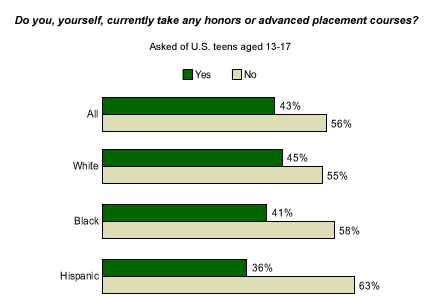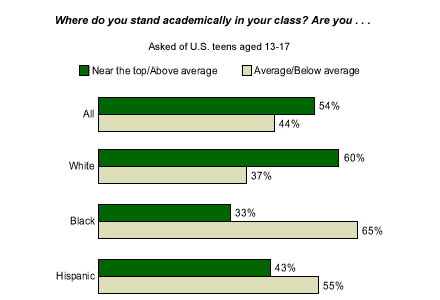"Although my dad paid taxes like everyone else," Carlotta Walls LaNier explained to a hushed room full of black teenagers and Hispanic teenagers, "I had to sit in the back of the bus, used the colored restrooms, could only go to the zoo on certain days, could not use the community swimming pool -- and could not attend my neighborhood high school."
LaNier, keynote speaker at the Minority Student Achievement Network (MSAN) Conference last month in Princeton, N.J., was talking about her life before she became known as one of the "Little Rock Nine." She was one of nine black students who courageously walked through the doors of Little Rock Central High School in 1957 after the practice of having separate schools for black children and white children was outlawed.
But, LaNier went on to tell the students, access to equal education was only half the battle. Closing the achievement gap -- which is the goal of MSAN, a coalition of multiracial suburban school districts that come together to study the disparity in achievement between white students and students of color -- has become a hard-fought second front in the struggle to end educational disparities.
At least one measure of minority students' academic performance doesn't look so bad. According to aggregated data from Gallup Youth Surveys over the past year*, similar percentages of white (45%) and black (41%) teens tell Gallup they currently take honors or advanced placement courses, with Hispanic teens lagging just slightly behind white teens at 36%.

The findings about nonwhite students' attendance in challenging courses may seem counterintuitive against a backdrop of talk about the achievement gap. One factor to keep in mind is that some minority students attend schools that are racially homogeneous -- so in many cases white, black, and Hispanic students are not competing directly for spots in the same classes. Twenty-one percent of black students attend school with mostly all black students and 22% of Hispanic students attend school with mostly all Hispanic students.
Class Standing by Race
One of the main goals of No Child Left Behind -- the education law designed to equalize the quality of education between wealthy schools and poor, mostly minority, schools -- is to bridge the achievement gap. But perceptions of academic self-worth can't be legislated.
Although similar percentages of white teens and nonwhite teens report taking the most rigorous courses at their schools, nearly twice as many white teens as black teens describe their academic standing as "near the top" or "above average" (60% of white teens vs. 33% of black teens). Hispanic teens see themselves in a slightly better academic light than blacks; nevertheless, just 43% identify themselves as top performers. Black teens' seeming reluctance to identify themselves as top performers may be reinforced through what anthropology professors John Ogbu and Signithia Fordham termed "the burden of acting white." Fordham and Ogbu argued that if blacks touted academic success -- typically a behavior associated with white Americans -- they would be looked down upon by their black peers.
Based on the comments offered by Nashalie, a Hispanic high school student from Massachusetts, the "burden of acting white" phenomenon may also explain Hispanic teens' reluctance to see themselves as "top performers."
"I know the reason some of my friends don't want to take the Honors/AP classes -- or say they are not doing well in them -- is because, if they do, then others will think you are 'being white' or that you think you are 'better' than them. It's hard enough to go through high school as a minority student without the added pressure from your friends," Nashalie says.

Barrier to Success
Rossi Ray-Taylor, the executive director of MSAN, is not at all surprised that black teens and Hispanic teens see themselves on the lower rung of the academic ladder. "All kids form opinions early about their place in class," Ray-Taylor says. "Minority teens are not called upon in class as often as whites, and seldom get positive feedback on their work." Nashalie agrees with Ray-Taylor. "I have witnessed cases where teachers have very different expectations for minority and white students. A white student with a 'C' in the class is 'slacking off', while a Hispanic student with a 'C' is working to his potential."
Another barrier to academic success is a poor command of English. "Language, of course, can be an obstacle to succeeding in school and getting high grades," says Yessica, a Hispanic teen from New Jersey. "If one can't understand the material, or can't do it, we can get very frustrated, and that will have an impact on self-esteem. If minorities feel that they can't do it, they will say 'I don't want to do it' and will give up."
Bottom Line
Conventional wisdom suggests that as the achievement gap closes, so will the gap in academic self-esteem. To that end, Nashalie advises, "Get minority students more involved in school through some means -- whether it's sports, arts, theater, music, or clubs. The more students are involved and the more they feel that they do make an impact on the student body, the better they will succeed in all areas of high school."
"Hard work always sooner or later pays off," says Yessica. "I think what we need to work on is motivation -- help in opening the doors to [minority students] and understanding their fear of trying their best and possibly still failing."
LaNier offered a number of recommendations to her young audience, such as having a sense of purpose and not being influenced by negative thinkers. But most importantly, she said, "When an opportunity comes along -- go through that door!" Which may be good advice coming from someone who did exactly that, and brought millions of minority students along with her over the last half-century.
*The Gallup Youth Survey is conducted via an Internet methodology provided by Knowledge Networks, using an online research panel that is designed to be representative of the entire U.S. population. The questionnaires were completed by 1,740 respondents, aged 13 to 17, between Sept. 29, 2003, and Sept. 3, 2004. For results based on the total sample, one can say with 95% confidence that the maximum margin of sampling error is ±3 percentage points.